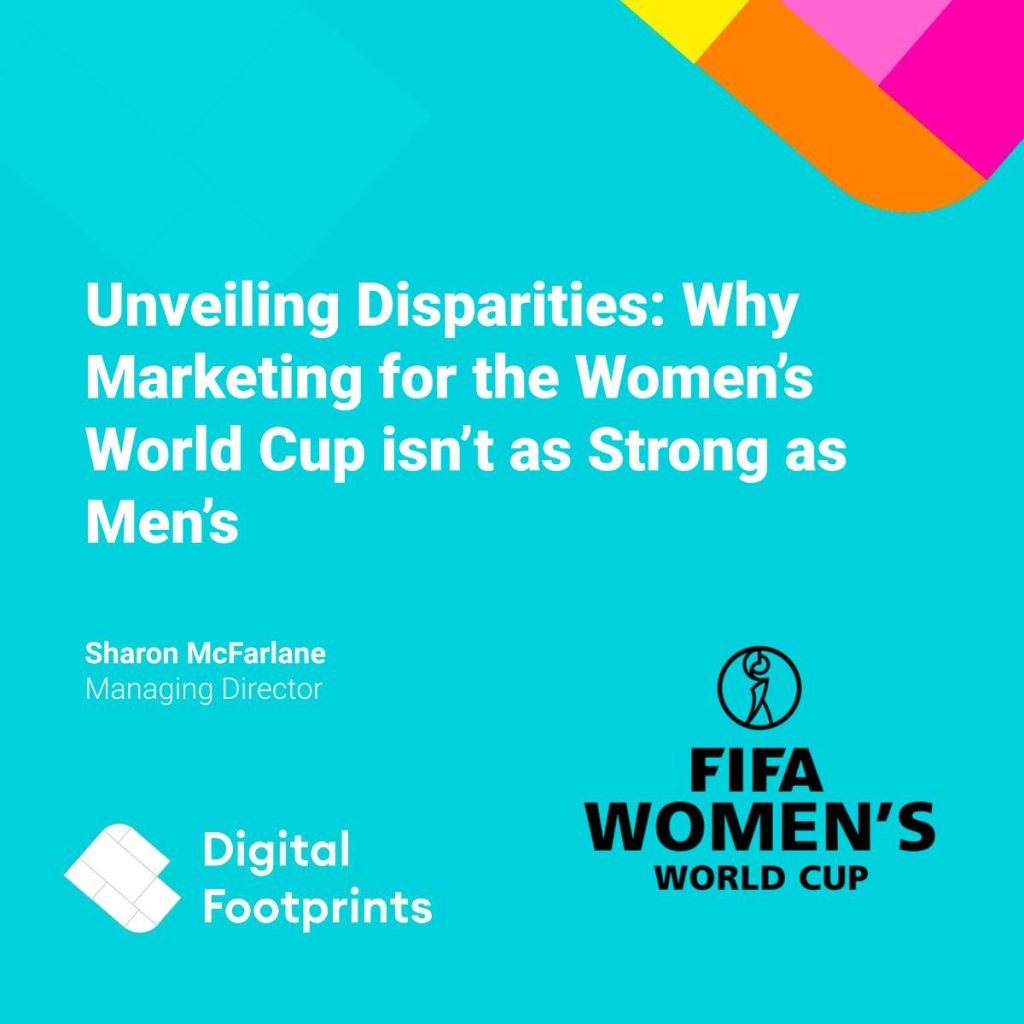The anticipation for the Women’s FIFA World Cup final between England and Spain was palpable. For England, this marked their 6th appearance in the tournament, with a track record of reaching the semi-finals three times and the quarter-finals on the other occasions. This time, however, there was a collective feeling that victory was within their grasp.
Despite the immense passion, excitement, and fervor surrounding the competition, I found myself nearly forgetting about the game until a morning reminder jolted my memory. This got me wondering – would I have forgotten if it were the Men’s World Cup and England had made it to the final? Let’s face it, the media coverage and attention that would have followed would have made it impossible for such a significant event to slip my mind. This led me to delve deeper into the discrepancy between the marketing efforts for men’s and women’s football, especially as my agency focuses on football as a powerful marketing tool for our clients.
As I watched the Lionesses take the field, a sense of nostalgia washed over me. I was reminded of the movie “Bend it Like Beckham,” which came out when I was 15. I originally was interested as I wanted to see an appearance from the rather handsome “golden balls” himself (David Beckham), only to realise that the message behind the title held greater significance than I had initially perceived.
Released in 2002, the movie faced challenges in securing financing due to the prevailing notion that women’s football was not a compelling subject. Ironically, although the movie centered entirely on women’s football, it still required the association with the golden boy of football to attract interest. It wasn’t until recently that I truly grasped the importance of this narrative as our agency’s connection with the sports world has grown stronger.
Historical Precedence and Investment
The stark disparities between marketing efforts for men’s and women’s football can be attributed, in part, to the historical precedence set by the men’s World Cup. This legacy has not only translated into heightened recognition but also increased investment in women’s football. However, the question remains: why is this unequal treatment still the norm?
From grassroots levels to professional leagues, women’s football has consistently received less investment compared to its male counterpart. This disparity perpetuates the notion that women’s football is secondary, even though its athletes demonstrate remarkable skill, dedication, and passion on the field. The cycle of less investment leading to less attention and, consequently, lesser investment is a vicious one that has long plagued women’s football.
Changing the Narrative: The Road Ahead
As we navigate the intersection of football and marketing, it’s crucial to acknowledge that a shift in perspective is overdue. But rather than sit back and complain, what can we do about it? How do we close the gap and generate more revenue and media hype for the women’s game?
Strong commercial partnerships are key. We need more businesses to get behind professional women’s sports teams in terms of sponsorships. We live in a world where diversity and inclusion is part of any core objective as a business, especially a business that has a strong community focus.
We need to make stronger connections and ties with women’s football teams as we do with men’s to send a stronger message, to build that hype. The responsibility lies with all of us. We need the agencies (like us) to see the marketing potential in these teams and push them as valuable propositions in the first instance.
We also need the women’s teams to work on building the profiles of their players and their roles as brand ambassadors to give the younger audience something to connect with. We also need to ensure there is strong support from the commercial teams at these football clubs to present these valuable prospects to corporations and truly sell the vision.
How Far Women’s Football Has Come
I think we also need to take a look at how far women’s football has come. Despite the historical precedent of it being a male dominated space,, it has come such a long way. Taking the FIFA World Cup as an example – there were a huge number of prominent campaigns, partnerships and collaborations surrounding it. We had Burger King change their logo to Burger Queen, we had London Underground OOH campaigns, and even Breast Cancer Now got involved with their “We Can Beat More Than Just Spain Today” campaign.
Let’s hope by 2027, the context of our articles aren’t based on disparity, and have no relevance to gender whatsoever.


